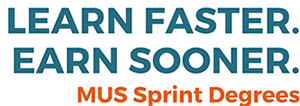
A Guide To Paying For School
Redirect to https://applymontana.mus.edu/paying-for-school/
Making College Affordable
Don’t Leave Money on the Table
A huge majority of first-time students end up receiving some form of financial aid. So, no matter your background, intention, or interest, you can minimize or eliminate the cost of paying for school by applying for financial aid.
We have gathered useful guidance to help you through the application process so make sure to take that first step and apply early!
Financial aid may come in different forms. So make sure to learn the types of financial aid. This includes the details and differences between each type of financial aid, as well as the differences in eligibility requirements and responsibilities that come with each.
Learning how to apply for financial aid can be stressful, but we can help you through it so you can take that first step to funding your education. The Free Application for Federal Student Aid (FAFSA) is a single application you can fill out for many different types of financial aid. Make sure you apply early especially with nothing to lose and lots to gain by applying!
As with saving for anything, saving for college is more effective the earlier you start doing it. Find out more about Montana’s 529 program, a tax-advantaged savings program that allows you to pay for you or a loved one’s college education.
Applying for financial aid can significantly lower, or even eliminate, the cost of funding your education. Get an idea of how much financial aid you may be eligible to receive so you can plan ahead for college savings more effectively. The financial aid forecasting tool allows you to use information about your and your family’s finances to estimate how much aid you can expect to receive.
Providing Support. Increasing Opportunity.
Additional Financial Aid Assistance
There are many ways that MUS can help fund your education in addition to traditional financial aid. You can take advantage of scholarships, grants, tuition assistance programs, work-study programs, loans, and more. Learn the definition of each, eligibility requirements, and which option(s) make the most sense for you!
You don’t need to be an all-star athlete or a 4.0 student to be eligible for a scholarship, which can be awarded based on many factors such as academic performance, financial need, field of study, or even your background. Unlike loans, scholarships are free and do not need to be paid back. Learn more about Montana scholarship and grant opportunities!
Tuition waivers are non-cash scholarships that are given based on specific criteria. If you're eligible, you can potentially have your entire tuition waived. The Montana University System offers various waivers to students who meet specific criteria so make sure to learn more and check if you're eligible.
Work study consists of state or federal programs that help pay for your education by allowing you to work part-time at an available job on your campus to earn a wage (while also building your resume and generating valuable references). Work study placements are usually determined by financial need but may include other criteria as well.
Loans are different from scholarships, grants, and other types of assistance since loans need to be paid back at some point in the future, usually after the student graduates and enters the workforce. Learn about the different eligibility criteria and loan programs that you can use to fund your education.







